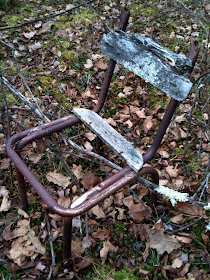Happy holidays to all, whatever you celebrate (and there is ALWAYS something to celebrate)!
Great Gift #1. Handkerchiefs with a silk-screened bee motif:

I pretty much started boycotting tissues once it sunk in how wasteful and destructive they are (although things on the Kleenex front improved in August of this year thanks in good measure to a five-year-long Greenpeace campaign). These days, I use low-cost cotton hankies, which are soft, reusable, and way greener and cheaper than tissues.
That's why these cool bee hankies rank #1 on this year's gift list—they're practical, reusable gifts for the ecologically and aesthetically minded beekeeper.
Great Gift #2. Vinyl Wall Graphics for Bug Freaks:




If these images grab you, check out the entire WilsonGraphics collection of customizable vinyl decals and wall graphics, featuring butterflies, moths, beetles, and tons of other cool stuff, including: the lovely retro "Kindness to Animals" silhouette-style motif shown above, "Creepy Crawly Tarantula Spiders," and "5 Mushroom Decals."
Great Gift #3. Power Bee T:
 This is one hunky bee, and I love the assertive simplicity of this design. Cafe Press has zillions of other fun bee-themed thingamajigs, including mugs, aprons, bumper-stickers, clocks, and caps.
This is one hunky bee, and I love the assertive simplicity of this design. Cafe Press has zillions of other fun bee-themed thingamajigs, including mugs, aprons, bumper-stickers, clocks, and caps.Great Gift #4. For the formal beek:
How about a silk-screened necktie?


Great Gift #5...For the Eco-Beek Who Neither Needs Nor Wants More Stuff:
By supporting a healthy environment, we're giving a gift to our beekeeper friends, our bees, and ourselves.
One way to do this is to donate to the environmental group of your choice in honor of your beekeeper friends. Some of my favorite groups are: Natural Resources Defense Council (NRDC), Friends of the Earth, Environmental Advocates of New York, The Xerces Society for Invertebrate Conservation, and Just Food (which is working hard to help get beekeeping legalized in NYC).
Great Gift #6. For the Timely Beek....
Beekeeping is all about knowing the seasons and working within the realities of time. For that, a great calendar is called for. In that department, I recommend the work of Nikki McClure. While not bee-specific, her woodcuts are earthy, inspiring, and smart. Check out McClure's 2010 calendar here.

And on that forward-thinking note, I wish you, your bees, and all residents of earth a happy, healthy, and peaceful New Year!









































